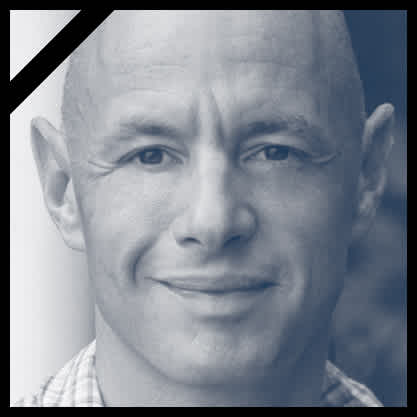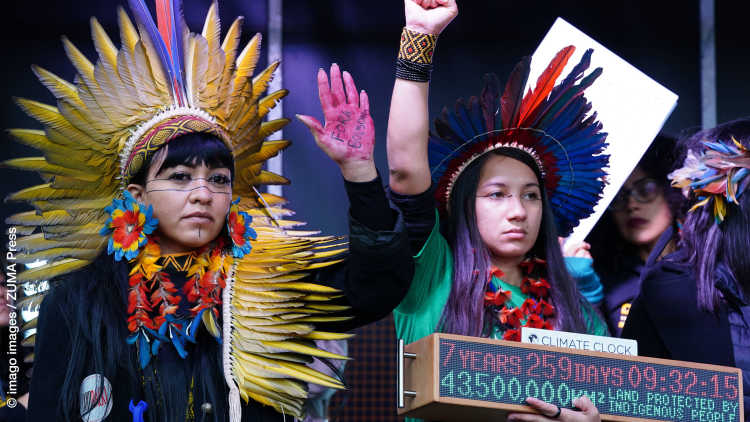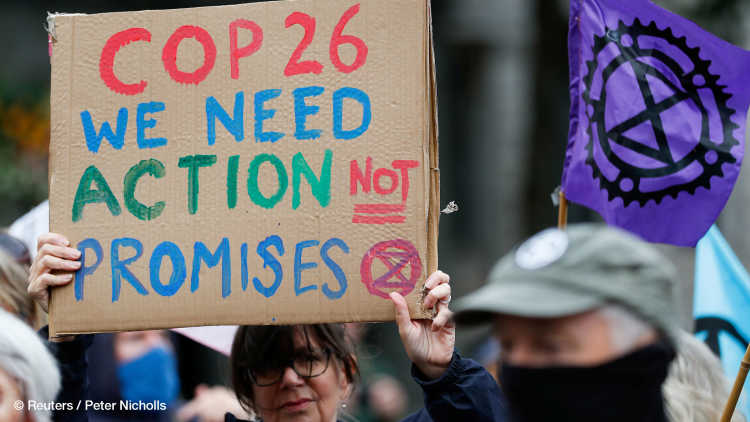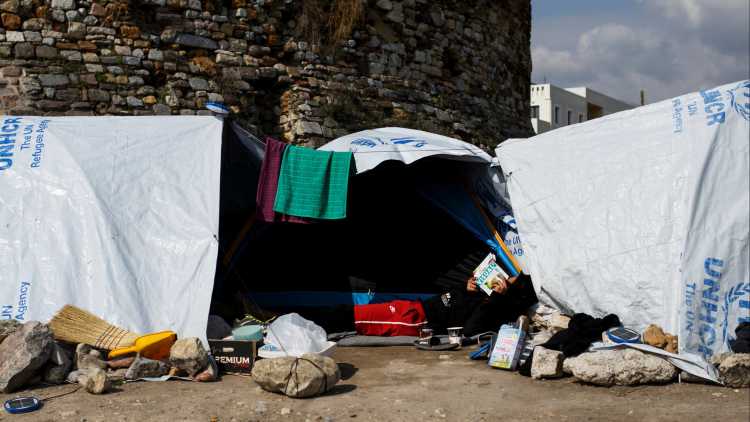- Startseite
- Publikationen
- GIGA Focus
- A Heated Debate: Climate Change and Conflict in Africa
GIGA Focus Afrika
Eine hitzige Debatte: Klimawandel und gewaltsame Konflikte in Afrika
Nummer 2 | 2020 | ISSN: 1862-3603

Die schlimmste Dürre des Jahrhunderts im südlichen Afrika trocknete Ende des vorigen Jahres die weltberühmten Viktoria-Fälle an der Grenze zwischen Simbabwe und Sambia zu einem kümmerlichen Rinnsal aus. Die Bilder der trockenen Wasserfälle heizten die Diskussionen über die Auswirkungen des Klimawandels auf die Lebensbedingungen und die Sicherheit der Menschen auf dem afrikanischen Kontinent erneut an. Die aktuelle Forschung sieht jedoch nur eine schwache Verbindung zwischen Klima und gewaltsamen Konflikten.
Das subsaharische Afrika, vor allem Teile Ostafrikas, der Sahel und das südliche Afrika, ist die am stärksten vom Klimawandel betroffene Weltregion. Die Forschung betrachtet den Klimawandel vor allem als „Gefährdungsverstärker“ und hält hohe Armutsraten und geringe staatliche Leistungsfähigkeit fürs bedeutendere Konflikttreiber.
Allgemeine Untersuchungen der Effekte des Klimawandels verdecken jedoch bedeutende Unterschiede: In einigen Teilen Afrikas bedrohen extreme Wetterereignisse wie Dürren und steigende Temperaturen schon jetzt die Verletzlichsten – arme Menschen, die auf Subsistenzlandwirtschaft und regelmäßigen Regenfall angewiesen sind. Jedoch ist die Unsicherheit über die Auswirkungen des Klimawandels auf gewaltsame Konflikte in der Forschung noch immer hoch.
Unter bestimmten Bedingungen kann Klimawandel zu Konflikten, aber auch zu stärkerer Kooperation in betroffenen Gemeinschaften in Afrika führen. Die Forschung ist aufgerufen, noch genauer jene Mechanismen zu untersuchen, wie Individuen und Gemeinschaften auf extreme Wetterereignisse und langfristige Klimaveränderungen reagieren. Es ist dabei besonders wichtig, zu verstehen, wie stärkerer gesellschaftlicher Zusammenhalt und staatliche Unterstützung dazu beitragen können, die negativen Auswirkungen des Klimawandels zu mildern.
Fazit
Nach dem letzten Bericht des Intergovernmental Panel on Climate Change (IPCC) aus dem Jahr 2014, wird der nächste IPCC-Report im Jahr 2022 die Verbindung zwischen Klima und Konflikt erneut in den Blick nehmen. Ein besseres Verständnis der Mechanismen, die zu gewaltsamen Konflikten führen und eine Konzentration auf die verwundbarsten Menschen (die direkt von regelmäßigen Niederschlägen für die Landwirtschaft abhängen) sollte im Zentrum stehen. Die europäische und deutsche Afrikapolitik sollte sich zudem auf die Unterstützung der Menschen in Afrika konzentrieren, die vermutlich am stärksten vom Klimawandel betroffen sein werden.
Climate Change: Increased Competition over Scarce Resources
Recent media and non-governmental organisation reports indicate that competition over land and other scarce resources is increasingly turning violent in many African countries. According to Amnesty International (2018), more than 3,600 people died as part of conflicts between farmers and herders in Nigeria from the beginning of 2016 and October 2018. The organisation links these violent clashes to competition over land, water, and pastures. Similarly, in the border region of Kenya, South Sudan, and Uganda struggles between pastoralist groups seem to have intensified. In a recent article, The Economist (2019) directly connects the violence of Boko Haram in Nigeria to diminishing livelihoods and the corresponding susceptibility to radical ideologies caused by the shrinking of Lake Chad: “As the lake receded, people moved towards it, plagued by swarms of tsetse flies. Herdspeople, farmers and fisherfolk competed for access to the shrunken supply of water.”
These extreme weather events epitomise a general trend across sub-Saharan Africa. The world region’s environmental conditions are changing already, and climate change will have further profound consequences. Surface temperatures have increased by 0.5°C over the last 50 years across most parts of Africa, and are projected to increase faster compared to the rest of the world. This will have three major consequences: First, droughts have already become more frequent and intense – analysts expect them to get worse, especially in Central and Southern Africa. Second, rainfall will become increasingly unpredictable; more extreme rain will lead to worse floods on dry soils. Third and finally, desertification will reduce the arable land available to farmers and pastoralists, and will thereby increase resource scarcity and environmental stress. Higher temperatures and droughts will reduce crop yields, and have adverse effects on the health of the livestock – most notably cattle – people depend on.
Ultimately, the impacts of climate change threaten the food security and the livelihoods of affected communities. However, the nexus between this changed climate and violent conflict in Africa is less straightforward than media reports imply. To start with, there are different forms of conflict – most prominently, “armed conflict” between the state and rebel groups or “non-state conflict” between communities (for instance between herders and farmers). While increased competition over resources can – under specific conditions – trigger violent conflict between communities, there is less evidence in the literature for it having the same effect on armed conflict between the state and rebel groups. In addition, there are multiple potential pathways. For instance, there remains uncertainty about the level and effect of environmentally induced migration. On the one hand, people leaving regions that have become uninhabitable will increase the pressure on arable land and water sources in the areas they head to. On the other, out-migration also reduces the environmental stress in regions strongly affected by climate change. Thus, violence is by no means inevitable.
Based on existing analyses, Figure 1 below presents some of climate change’s potential effects on violent conflict in Africa. It is not meant to be an exhaustive list, rather to demonstrate the multiple potential pathways from the former to the latter – as well as the complexity of their relationship.

In addition, geographical variation is considerable when it comes to the risks of climate change. According to predictions, two regions in Africa are especially vulnerable to climate-related (violent) conflict: East Africa, and the arid lands in West Africa lying below the Sahara Desert, the Sahel. Here, the climate could change drastically and competition over shrinking fertile land be particularly pronounced. What factors exactly put these two regions at particular risk?
The people in both regions strongly depend on natural resources for their livelihoods, especially rain-fed farmland and pastures.
The high prevalence of pastoral communities in East Africa and a combination of pastoral and agricultural livelihoods (pastoralists versus herders) in the Sahel might create antagonisms between different communities.
A rapidly growing population in the last decades has raised demand for already-scarce arable land.
State capacity to adapt to and cope with the effects of climate change is low in the two regions. Widespread poverty and a history of violence in many parts of both the Sahel and East Africa pose additional risks.
The Sahel especially is expected to see further increased weather extremes. Rainfall there varies significantly, which leads to more frequent and intense droughts and floods.

Figure 2 above depicts the regions in Africa that were hit by severe droughts in 2016, the last year for which comprehensive data is available, as well as the incidence of deadly violence as assessed by the Uppsala Conflict Data Program (UCDP, incidents where at least one individual was killed by political violence; data also for the year 2016). The goal here is not to imply a direct causal connection between climate change and violent conflict, but to highlight their complex relationship: While there is a clear geographical overlap between substantial droughts and lethal violence (with the Sahel and parts of East Africa being hotspots for both drought and violent conflict), a number of conflict events did not coincide with droughts in this particular year.
Climate and Conflict: A Heated Debate
The relationship between climate change and violent conflict is complex, and contested. The scientific findings are not as clear as some media reports make the relationship out to be. In fact, there has been a heated debate within the scientific community about whether and how climatic conditions substantially increase the risk of violent conflict. In 2009, Burke et al. published a highly influential paper in which they claimed a strong historical link between civil war and high temperatures in Africa. They combined their findings with climate projections, estimating that by 2030 armed conflict will have increased by 54 per cent – with an additional 393,000 battle-related deaths caused by rising temperatures.
Other scholars have strongly criticised these alarming findings. Buhaug (2010) took issue with the operationalisation of conflicts, the narrow time horizon, and with the statistical methods used, and showed that the conflict-driving effect is extremely sensitive to model specifications. Consequently, he concludes that “[t]he simple fact is this: climate characteristics and variability are unrelated to short-term variations in civil war risk in sub-Saharan Africa. The primary causes of civil war are political, not environmental” (Buhaug 2010: 16481).
Part of the reason for this controversy is also that studies use different thresholds for “violent conflict.” Most assess 25 fatalities, the standard number in conflict research, while others work with the measure of one killed person; other researchers besides focus on rebel and communal violence, or simply citizens’ support for violence. Sampling bias in case selection is considered a further problem (Adams et al. 2018). However, the current consensus seems to be that – compared to other factors – climate and climate change only exert a weak effect on violent conflict, be it non-state or in particular the armed conflict between rebels and the state. In order to identify the points of agreement within the scientific community, Mach et al. (2019) recently conducted an expert elicitation process. These experts estimated that to date climate-related factors have affected only about 5 per cent of intrastate conflicts. They conclude: “Climate variability and/or change is low on the ranked list of the most influential conflict drivers across experiences to date, and the experts rank it as the most uncertain in its influence” (Mach et al. 2019: 2).
Another perspective even argues that the joint exposure to environmental hazards creates an opportunity for enhanced cooperation. Going by this argument, natural disasters can create a “community of fate” wherein societal differences are superseded by the need to overcome the damage caused by a catastrophe. For example, a recent study showed that droughts in East Africa increased the social trust within and across ethnic groups when all groups are equally affected (De Juan and Hänze 2019). Another argument on “environmental peacebuilding” extends this perspective to the process of peace-making between states. Here, environmental problems act as a “foot in the door” to further cooperation. Again, this phenomenon is most evident in Africa (Ide 2018).
Underlying Mechanisms: How Climate Change Affects Conflict
Not only do scholars consider climate’s general effects on violent conflict to be low compared to other factors, there is also considerable uncertainty about the underlying mechanisms that create this connection. Highly aggregated research trying to link climate variability and conflict has often provided unclear results. Climate’s effects are always conditional on further political, economic, and social factors. Consequently, there have been prominent calls in the scientific literature to more thoroughly investigate how and when climate change affects conflict. We need to know why in some communities suffering weather extremes violent conflict emerges while in others it does not.
For instance, the research findings on worsening livelihood conditions remain ambivalent. Buhaug et al. (2015) find no link between reduced agricultural output and violent conflict in sub-Saharan Africa, even in the countries where rainfall variability has the biggest impact on food production (similar for Syria, Fröhlich 2016). However, a meta-analysis demonstrates that worsening livelihood conditions in East Africa increase the risk of livestock raiding and communal conflict (van Baalen and Mobjörk 2018). A second prominent but hitherto little understood pathway linking climate variation to conflict is migration. Environmental stress can trigger the decision to migrate, and in turn increase competition over land in the receiving regions. In this sense, migration is both a way to adapt to changing environmental conditions and a potential driver of conflict.
State policies are one – if not the most important – factor that significantly influence the risk climate change poses, for instance shaping the effects of environmental migration. While there is an urgent need for more systematic research on the interplay between climatic changes and state policies, we do have evidence that the wrong policies can be devastating. In Nigeria, climate-induced land degradation and increasing violence in the north of the country have forced pastoralists south, where they clash repeatedly with farmers. The encroachment of farmland blocks traditional migration routes, while farmers suffer from the damage that livestock inflict on their crops. In Nigeria’s Benue State, an anti-grazing law has exacerbated already-high tensions between farmers and herders. This law permits cattle to only graze on established ranches, effectively outlawing traditional Fulani pastoralism. This prompted violent attacks from Fulani herders that not only led to the killing of dozens within Benue State but also in neighbouring states, after herders were driven out of the former (International Crisis Group 2018).
Botswana’s government, on the other hand, devises proactive plans to adjust to climate change. “In Botswana, where drought is frequent, President Mokgweetsi Masisi said the government plans to stop calling it an emergency and instead make drought relief part of the national budget.” According to media reports, the country’s president said, this “Drought Management Strategy […] would classify drought as a permanent feature in our budget plans” (source for both: Dube 2019).
State policies can also strengthen social processes that help to ameliorate the influence of climatic changes on violent conflict – while lacking state capacity and divisive government policies are considered important risk factors (Salehyan 2008). For instance, in rural Kenya, interethnic community dialogue undermines the progression from droughts to violence. Where citizens reported that such intercommunity dialogue exists, worsening climatic conditions reduced the willingness of individuals to support violence. The same effect was found regarding traditional and governmental rules that regulate access to and the use of water and pastures. “Dedha” is an instructive example of traditional rules in northern Kenya. It establishes that while wells in the area are organised by only one person, no pastoralist can be turned away from accessing them and elders have the task of arbitrating in potential conflicts over use and access (Linke et al. 2018).
What We Should Do to Reduce Climate Change’s Adverse Effects
As outlined, identifying causes and mechanisms is a necessary precondition for designing promising policies to tame climate change’s adverse effects on human security across Africa. Currently, scholarly agreement on the required individual measures to make societies more resilient against violent conflict amplified or even triggered by climate change is low, while uncertainties are high. However, decreasing the vulnerability to weather extremes and integrating climate change as a risk factor into efforts for peacebuilding are especially important. International development assistance should focus on building state capacity and decreasing vulnerability among those that rely on rain-fed agriculture and cattle herding, particularly in the Sahel and parts of East Africa. These individuals are already suffering from increased droughts and competition over scarce resources. Climate change will further threaten their livelihoods in the coming years. Particularly important measures to counter the adverse effects faced by these individuals include (Mach et al. 2019):
Improve food security by stocking up reserves and keeping prices stable during times of drought.
Buffer income-shocks by providing support and securing access to credits for farmers, and by improving irrigation systems to reduce dependency on rain-fed agriculture.
Encourage economic diversification within (use of different crops) and beyond the agricultural sector, for instance by providing specific support and credit schemes to small-scale farmers.
Strengthen state capacity and create specific government agencies to provide equal levels of support to herders and pastoralists affected by climate change. Strengthen mechanisms to mitigate antagonisms between ethnic groups and communities who find themselves competing over scarce resources.
Invest more into research on the mechanisms that link climate and conflict in affected communities, and in knowledge transfer to help devise strategies to overcome climate-related conflicts.
Pay attention and react to the impact of climate change on the allocation of scarce resources, and to the situation of marginalised groups. Strengthen local-level government institutions and conflict-resolution mechanisms.
Enable “adaptive migration” by way of new institutions for regulating environmental migration, by strengthening consultative mechanisms between incoming immigrants and citizens in the “receiving” areas, as well as by enhancing support for both.
European and German Africa policy are extremely well placed to support the realisation of these measures to tackle climate change’s adverse effects for the most vulnerable in Africa. They also represent an innovative way to further strengthening the link between “climate and security,” as a trademark feature of German foreign policy.
The author is extremely grateful to Niklas Hänze for the substantial research he contributed to this GIGA Focus; he also created Figure 2. In his B.A. thesis at the University of Osnabrück, Niklas Hänze has focused on the relationship between climate change and political trust. He has also worked on “Climate and Cohesion – the Effects of Individual and Group-Level Drought Exposure on Intra-Ethnic and Inter-Ethnic Trust” together with Alexander De Juan.
Fußnoten
Adams, Courtland et al. (2018), Sampling Bias in Climate–Conflict Research, in: Nature Climate Change, 8, 3, 200–203.
Amnesty International (2018), Harvest of Death: Three Years of Bloody Clashes between Farmers and Herders in Nigeria, London: Amnesty International.
Brzoska, Michael, and Christiane Fröhlich (2016), Climate Change, Migration and Violent Conflict: Vulnerabilities, Pathways and Adaptation Strategies, in: Migration and Development, 5, 2, 190–210.
Buhaug, Halvard (2010), Climate Not to Blame for African Civil Wars, in: Proceedings of the National Academy of Sciences, 107, 38, 16477–16482.
Buhaug, Halvard et al. (2015), Climate Variability, Food Production Shocks, and Violent Conflict in Sub-Saharan Africa, in: Environmental Research Letters, 10, 12, 1–11.
Burke, Marshall B. et al. (2009), Warming Increases the Risk of Civil War in Africa, in: Proceedings of the National Academy of Sciences, 106, 49, 20670–20674.
De Juan, Alexander, and Niklas Hänze (2019), Climate and Cohesion – The Effects of Droughts on Intra-Ethnic and Inter-Ethnic Trust, manuscript, Osnabrück: University of Osnabrück.
Dube, Mqondisi (2019), Botswana Drought Makes Wasteland of Harvests, Livestock, in: Voice of America, 29 November, www.voanews.com/africa/botswana-drought-makes-wasteland-harvests-livestock (24 March 2020).
Fröhlich, Christiane J. (2016), Climate Migrants as Protestors? Dispelling Misconceptions about Global Environmental Change in Pre-Revolutionary Syria, in: Contemporary Levant, 1, 1, 38–50.
Ide, Tobias (2018), Does Environmental Peacemaking between States Work? Insights on Cooperative Environmental Agreements and Reconciliation in International Rivalries, in: Journal of Peace Research, 55, 3, 351–365.
International Crisis Group (2018), Stopping Nigeria’s Spiralling Farmer-Herder Violence, Africa Report 262, Abuja, Dakar, Brussels: International Crisis Group.
Linke, Andrew M. et al. (2018), Drought, Local Institutional Contexts, and Support for Violence in Kenya, in: Journal of Conflict Resolution, 62, 7, 1544–1578.
Mach, Katharine J. et al. (2019), Climate as a Risk Factor for Armed Conflict, in: Nature, 571, 7764, 193–197.
Peng, Jian et al. (2019), A Pan-African High-Resolution Drought Index Dataset, in: Earth System Science Data Discussions, October, 1–26.
Salehyan, Idean (2008), From Climate Change to Conflict? No Consensus Yet, in: Journal of Peace Research, 45, 3, 315–326.
Sundberg, Ralph, and Erik Melander (2013), Introducing the UCDP Georeferenced Event Dataset, in: Journal of Peace Research, 50, 4, 523–532.
The Economist (2019), How Climate Change Can Fuel Wars, 23 May, www.econo mist.com/international/2019/05/23/how-climate-change-can-fuel-wars (24 March 2020).
van Baalen, Sebastian, and Malin Mobjörk (2018), Climate Change and Violent Conflict in East Africa: Integrating Qualitative and Quantitative Research to Probe the Mechanisms, in: International Studies Review, 20, 4, 547–575.
Gesamtredaktion GIGA Focus
Redaktion GIGA Focus Afrika
Lektorat GIGA Focus Afrika
Regionalinstitute
Forschungsschwerpunkte
Wie man diesen Artikel zitiert
von Soest, Christian (2020), Eine hitzige Debatte: Klimawandel und gewaltsame Konflikte in Afrika, GIGA Focus Afrika, 2, Hamburg: German Institute for Global and Area Studies (GIGA), https://nbn-resolving.org/urn:nbn:de:0168-ssoar-67161-7
Impressum
Der GIGA Focus ist eine Open-Access-Publikation. Sie kann kostenfrei im Internet gelesen und heruntergeladen werden unter www.giga-hamburg.de/de/publikationen/giga-focus und darf gemäß den Bedingungen der Creative-Commons-Lizenz Attribution-No Derivative Works 3.0 frei vervielfältigt, verbreitet und öffentlich zugänglich gemacht werden. Dies umfasst insbesondere: korrekte Angabe der Erstveröffentlichung als GIGA Focus, keine Bearbeitung oder Kürzung.
Das German Institute for Global and Area Studies (GIGA) – Leibniz-Institut für Globale und Regionale Studien in Hamburg gibt Focus-Reihen zu Afrika, Asien, Lateinamerika, Nahost und zu globalen Fragen heraus. Der GIGA Focus wird vom GIGA redaktionell gestaltet. Die vertretenen Auffassungen stellen die der Autorinnen und Autoren und nicht unbedingt die des Instituts dar. Die Verfassenden sind für den Inhalt ihrer Beiträge verantwortlich. Irrtümer und Auslassungen bleiben vorbehalten. Das GIGA und die Autorinnen und Autoren haften nicht für Richtigkeit und Vollständigkeit oder für Konsequenzen, die sich aus der Nutzung der bereitgestellten Informationen ergeben.





























